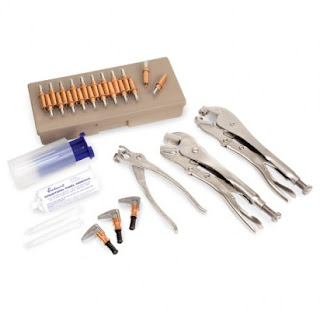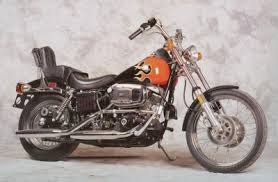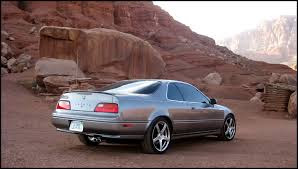 |
| This is the worst rust, check out the rest of the car! Could this be fixed economically? |
 |
 |
| I've always wanted one of theses. Nice! Only 700.00 listed on Craigs List as of 2/19/17 If only I wasn't buried in other projects. |
I have lately become a fan of European cars. I bought those two Jaguars. Like quite a lot of American car crazed kids I grew up admiring the glamorous imports.
I have subscriptions to two Euro car magazines, Jaguar World, (Natch) and Octane. Octane is a beautifully produced high quality magazine, covering classic European marques. with amazing photography and lush advertising. Think of it as Rodder's Journal for the truly Rich and Famous.
There are stories of complete restorations, rehabilitation's, and recommissions. Of course in the articles everything is done thoroughly and properly. Nothing is hastily cobbled together just to get the car back on the road. Because... Cost is no object.
In what kind of world can that statement be made?
Obviously these people are in a financial position that allows them to make their decisions without the compromises that we have to make every day. This statement isn't intended to vilify those that through heredity, good luck or hard work have scaled the economic ladder. Good for them.
We, on the other hand, are in a different situation. Limited resources applied to vehicles of limited value. In this same hand is our willingness and ability to get down and dirty, turn a wrench, visit junkyards, swap meets, and Craig's List to find what we need to complete out task at hand. Roaming through hardware stores, home improvement centers,and discount auto retailers like O'Reilly's and Pep Boys looking for the solutions to our problems.
Sometimes our solutions involve, Bondo, POR 15 (great stuff!), miracle epoxy fillers and adhesives, fiberglass, sheetmetal patches, screws, rivets and seam sealer. Universal weatherstripping, turbo mufflers, flexible exhaust tubing, cheap seat covers, floormats, Kraco stereo systems. Not to mention; sand paper, rubbing compound, Meguiars cleaning wax, WD40, Liquid wrench, PB Blaster, cans and cans of spray primer and "close enough" touch up paint.
 |
| Ask for it by name, |
All of this would be looked down upon by "our betters" or by others that would assume a position of judgement on our efforts.
Do I think that all work should be properly done, using the proper tools and procedures to the best of our ability? Of course. It is extremely satisfying to complete a job properly. Doing a proper brake job, turning the drum or rotor, replacing the springs and hardware, rebuilding the wheel cylinder or caliper. These are all mechanical tasks that are pretty straightforward. But what about repairing stained, torn and cracked front seats? What about fixing the headliner, or cracked or damaged dashboard? Or how about fixing the dented, faded bodywork or rusted floorboards? There are a lot of ways to proceed, which avenue you will pursue depends on a lot of factors.
My old Explorer is a good example. While it was in pretty good shape, it was missing a hub cap, and several badges had been "ripped off." There is a minor scrape to the rt. rear door that looks like someone rubbed up against a concrete post. The interior is pretty good except the front seat bottoms are cracked and have some small rips. After 250k the front seatbelts are no longer so eager to roll themselves up when you open the door. Last week after the storm I finally decided to visit my local Pick and Pull yards to see what I could find. Before you go it's a good idea to go online and price out some of the parts you need so you can decide if P&P's price is really a bargain. I found that the "Ford" oval on the hatch lid cost around 40.00 to replace. I already knew that new replacement seatbelts are hard to find and quite expensive.
Since Explorers have been very popular in the Bay Area I figured I would find many to choose from on the lot. I was not disappointed. Family SUVs see a lot of hard service and inside trim pieces are often pretty beat. First off, I found the Ford oval and V8 fender badges on the same vehicle. I found a few cars with grey interiors and manged to find a couple of good seat belt assemblies. They were much more energetic in rolling up, and no wonder. The odometers of both vehicles indicated 115,000 miles and the other 125,000 miles. Those were over 120,000 miles less than on my Explorer! Now some of you may think "how can you buy such an important piece of safety equipment at a junkyard?" "Shouldn't it be replaced with a new or rebuilt unit?" Well, have you ever bought an old used car? I will bet that whatever the mileage, if the seatbelts worked and were not frayed or torn you probably didn't think too much about it. I used to install seatbelts at the GM assembly plant in Fremont Ca. There's no magic here. As long as the inertia lock and latches work and the fabric of the belt is not damaged, they should be good to go. All you need is a torx bit to remove and install them.
On the way out, I found an immaculate set of hubcaps in the rear of another Explorer. So how much did my my little journey to the "Valley of anguished metal" set me back? All told, three emblems, two seat belts, and a chrome hubcap cost under 75.00, replacement warranty and tax included. Not bad since a new Ford oval cost half that much. I will report on the installation of these parts, as well as the paint touch up, and seat cover installation in a future post.
So wrecking yard parts are a good alternative source of material to fix up your car. Nothing wrong with sourcing your parts from there.
Other "backyard" methods of fixing damaged body work are familiar to us. I know that I have done bondo repairs to a few cars in my time. We all seem to think that we can do a good job pounding out the dents and slathering on the filler. Sometimes body repair mesh is used to span gaps and cracks, or fiberglass or epoxy products can be used to repair rusted spots. Floorboards are often repaired with sheetmetal panels that are either affixed with sheetmetal screws or my favorite thing, pop rivets. Is there anything so terrible in doing this?
First of all, any structural issues must be addressed. If supporting members are damaged, they must be repaired. Luckily, around here, most rust issues affect non structural areas like lower fenders, doors and quarter panels. They are cosmetic repairs, if the damage is structural and too extensive for reasonable replacement or repair, it's probably time to start a new project. Then rusted areas must be stabilized. Cut back affected metal, then seal with a good rust killer or sealer. I've had good luck with POR, paint and epoxy filler. Then you can cover the repair with bondo, if necessary. Bondo is like a sponge, soaking up and holding moisture causing even more rust damage. It hides under the paint and filler until those ominous blisters and bubbles pop up.
 |
| Mill Supply has panels for Camaros and Mustangs and more. |
Welding in patch panels is a much better solution and there are a bunch of pre shaped panels available from multiple suppliers. The panels are usually oversized and are trimmed to fit, which provides a lot of latitude for their attachment. One example is Mill Supply Co. It makes a wide range of patch panels. There are all kinds of affordable welding rigs available now. Just be careful and don't burn down your house or garage with an errant spark!
An alternative would be using a flush riveting rig, like the one I bought from Eastwood supply. It allows you to make a flush repair without welding or brazing. It came with a tool used to form a stepped lip that the trimmed patch panel fits into. Drill some holes around the perimeter, use the flush rivet setting tool to make an indented seat in the patch and the underlying sheetmetal. After some test fitting and "massaging" apply the rust sealer to the back of the area. Then apply the body adhesive to the joint prior to riveting. After it dries, use the rust sealer and a little filler to smooth the repaired area. Sometimes you can't even detect the repair. I used it to repair the rusted "dog leg" behind the left door on my Datsun 240z. I got behind the area, and cleaned it up first. Wow, there was a lot of dirt in there, I guess it is dust that is drawn in somehow and mixes with the condensed or leaked moisture and forms mud that sits there and causes rust. After cleaning I swabbed down every place I could reach inside with foam brushes and a sponge attached to a length of coat hanger wire. There wasn't any factory applied rustproofing in this area. My treatment was an improvement. I then rebuilt part of the left rear wheel lip with the POR putty. You couldn't even tell that it was ever fixed after painting. Of course you could also just secure it with a couple of rivets and take it down to a body or welding shop that could run a bead or braze it in. Perhaps you could develop a relation ship with a local shop that might do this between other jobs. Of course the DIY repair is pretty good on it's own.
After a few repairs, some bondo work etc. it might be a good time to get the whole car painted. Nothing makes a car look finished like a fresh coat of paint. My favorite paint shop in Fremont still has their 399.00 special going on until the end of February. That's a good deal! Yes, it's not going to look like Chip Foose did it in his shop, but by following the proper prep work, (which I covered in some of my earlier blogposts) you can achieve a satisfactory result. I am now a big fan of the cheap paint job. I was pleased with the job done on my '70 Mustang. I was very happy with my "design" of that car. The color, stance, wheels and overall look. I used inexpensive accessories like the racing mirrors, front spoiler, steering wheel and custom built grille and tallight panel, and matte black panels to create the look I wanted. Overall, I think I did a pretty good job creating a distinctive look for a common car. Could the execution have been better? Sure, a lot more time spent on body and paint preparation would have done wonders for the quality of the finish. But I didn't have an unlimited budget, and even if I did have more money available, how much more would I reasonably have spent? A man's got to know his and his car's limitations.
 |
| The owner/builder is always part of the process, and it seems,in the the picture. No wonder this shot was an out take. |
 |
| "Si se puede!" Yes we can, and will! |
Still, we carry on doing the best that we can. If you are able to keep your everyday driver fleet moving down the road, I salute you. I know that it's not always easy. If you are working on a favored project, and making progress, good for you. If you are doing the best you can, then I respect that.
Well, I've finally launched myself into the transmission swap of my XJS. The whole messy ordeal is underway. I will document my progress in following posts. As you can see, this will entail me getting down to into full dirty grease monkey status. I know that I'm getting a bit old for all this, but I'm ready to "gird my loins" (figuratively at least) for perhaps my final battle.
Still, I wish I had a place for that MGB GT!



































